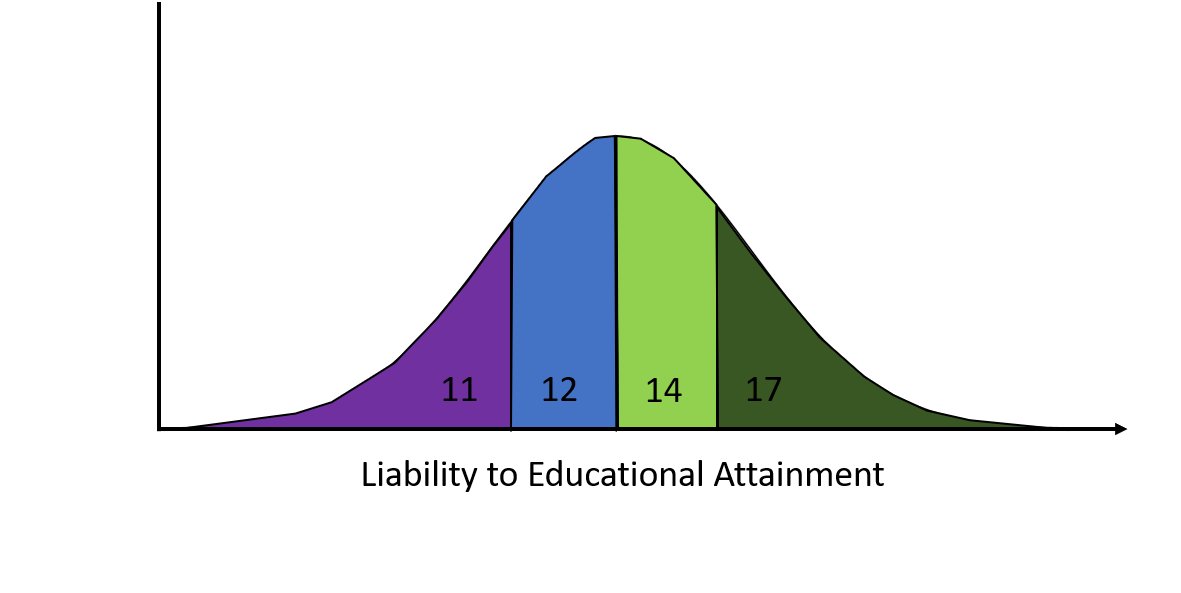A short summary of a preprint on interpreting Mendelian randomization analyses with categorical exposures with @nm_davies @mendel_random and @tudballstats https://www.medrxiv.org/content/10.1101/2020.12.14.20248168v1
(1.) Categorical phenotypes can be conceptualised in terms of an underlying latent trait (liability), e.g. liability to type II diabetes or educational attainment. Liability reflects a combination of genetic, environmental and stochastic factors.
(2.) Genetic variants influence categorical phenotypes via liability. Therefore, MR analyses with categorical exposures can be biased if liability influences the outcome independent of exposure category.
(3.) Liability-exclusive effects (independent of categorical exposure) can be evaluated in populations where the exposure is invariant. For example, associations between disease PRS and metabolites in children are unlikely to relate to disease status. https://www.ncbi.nlm.nih.gov/pmc/articles/PMC6348437/
(4.) This “negative control” approach has been used previously in East Asian populations (exploiting low levels of alcohol consumption in women) to investigate whether associations between alcohol variants and outcomes are via alcohol consumption. https://www.ncbi.nlm.nih.gov/pmc/articles/PMC2265305/
(5.) Here, we investigated liability-exclusive effects for educational attainment using genetic scores and phenotypes measured before minimum school leaving age (recalled by UKB participants). Associations are unlikely to relate to effects of years in full-time education.
(6.) We found strong associations between the scores and glasses use / smoking initiation at age 15 in conventional & within-sibship models indicating likely effects of liability to education. An orthogonal approach using ROSLA policy change reached similar conclusions.
(7.) Liability to categorical traits (education, disease) may influence outcomes independent of trait category. MR studies with categorical exposures should interpret estimates in terms of liability as effects may not be entirely via the categorical exposure.

 Read on Twitter
Read on Twitter


